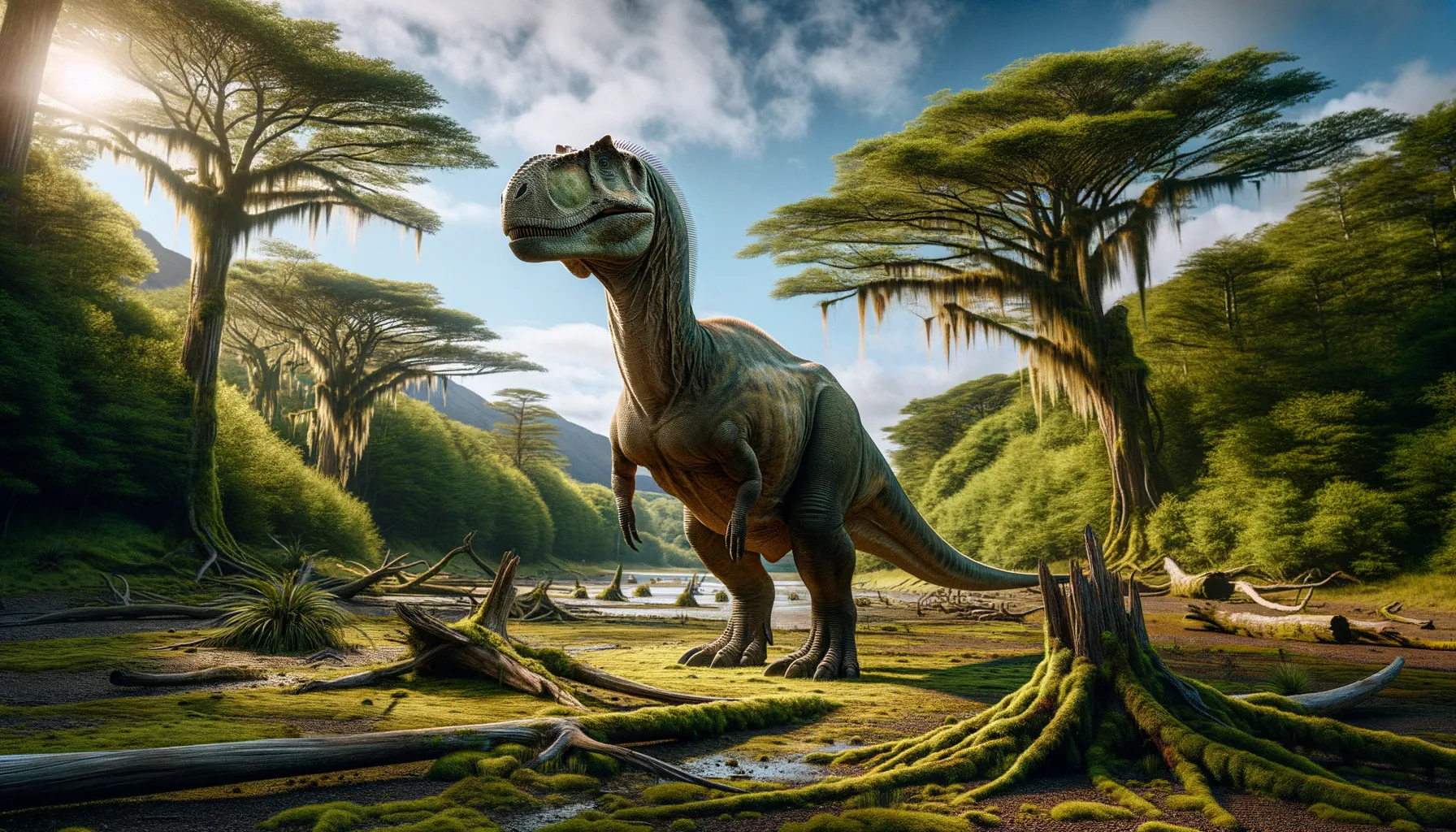
Mendozasaurus
Giant herbivore of the South American Cretaceous.
Period
Cretaceous
Length
Approximately 20 meters long.
Height
Around 10 meters tall.
Weight
Up to 22 tons.
Mendozasaurus was a large, plant-eating dinosaur that roamed the Earth during the Cretaceous period. This giant sauropod was known for its massive size, with a long neck and tail that allowed it to reach high vegetation. Its discovery in Argentina has provided valuable insights into the diverse ecosystem of the Cretaceous period in South America.
Diet
Mendozasaurus was a herbivore, primarily feeding on a variety of plants. Its long neck allowed it to reach and consume leaves from tall trees and shrubs.
Hunting
As a herbivore, Mendozasaurus did not hunt. It relied on its size to deter predators and peacefully grazed on vegetation.
Environmental challenges
Mendozasaurus faced environmental challenges such as climate changes and fluctuating food availability. Predators were a constant threat, although its massive size offered some protection. During droughts or harsh climate conditions, its survival depended on finding sufficient food.
Speed
Slow-moving due to its massive size.
Lifespan
Around 70 to 80 years.
First discovery
Discovered in Argentina in the early 2000s.
Fun Facts
- Mendozasaurus was a massive dinosaur that lived in what is now Argentina about 90 million years ago.
- This dinosaur was a sauropod, meaning it had a long neck and a long tail, making it resemble a giant lizard-like creature.
- Mendozasaurus was named after the Mendoza Province in Argentina, where its fossils were discovered.
- While scientists don't know exactly how big Mendozasaurus was, it is estimated to have been around the length of two school buses.
- Despite its enormous size, Mendozasaurus was a herbivore, feeding on plants and leaves with its long neck helping it reach food high up in trees.
- The Mendozasaurus was part of a group called titanosaurs, which were some of the largest creatures to ever walk the Earth.
- Mendozasaurus's bones were first discovered by farmers in the 1980s, highlighting how fossils can turn up in unexpected places.
Growth and Development
Young Mendozasaurus grew rapidly to reduce vulnerability to predators. They reached maturity over several decades, developing their massive size and distinct sauropod body shape. This growth period was essential for survival and reproduction.
Habitat
Mendozasaurus inhabited lush, forested areas with abundant vegetation. Its habitat included river valleys and floodplains, which provided ample food. These environments were critical for supporting its large size and dietary needs.
Interaction with other species
Mendozasaurus likely interacted with other herbivorous dinosaurs, competing for resources. It coexisted with predators, relying on its size for protection. Symbiotic relationships with smaller species may have existed, such as birds that fed on parasites.
Natural lifespan
Mendozasaurus had a natural lifespan of 70 to 80 years.
Reproduction
Mendozasaurus laid eggs, similar to other sauropods. Nests were likely located in secure environments away from predators. Parental care was minimal, with hatchlings fending for themselves upon birth.
Social behaviour
Mendozasaurus may have lived in groups to increase protection against predators. Social behavior likely included moving in herds or family units. Communication was essential for navigating its lush, complex habitat.
Fossil locations
Fossils of Mendozasaurus have primarily been found in Mendoza Province, Argentina. The region's geology has preserved critical remains that offer insights into its anatomy and lifestyle. Fossil sites provide significant data for understanding the Cretaceous period ecosystems in South America.
